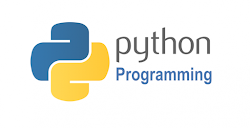
- Python was created by Guido van Rossum in 1991 as a general-purpose programming language.
- It is interpreted and interactive language.
- Python is an open-source language under a general public license (GPL).
Features:
1) Dynamical language - Python:
- Cross-platform compatible: Python code can be executed on all platforms like Windows, Unix, Linux, and others.
- Open-source language.
- Supports both structured and object-oriented styles of programming.
- wide range of libraries.
- Provides interface required to connect all major databases like MySQL, Oracle, and Others
Knowledge of the below basic concepts is a must before proceeding with the coding.
- Identifiers
- Keywords
- variables
- datatypes
- Input, output statements
- Operators
- Comments
1) Identifiers:
- Identifiers are used to identify any variable, function, class, module, and object in python by using a name which is called an Identifier.
- Identifiers are case-sensitive.
- It can start with an uppercase or lowercase character or an underscore (_) followed by n number of underscores, letters, and digits.
Example: Number_1 = 50
Here Number_1 is an identifier
2) Keywords:
- Keywords are reserved words in python.
- These can't be used as an identifier to name a variable or function.
- Some commonly used keywords are given below
- if, elif, else, for, where, break, pass, continue, input
3) Variables:
- Variables are used to hold the data which are like a container.
- The value which the variable holds may not be the same throughout the program, it may change depending on the program logic.
- Syntax: Variable_name = value
Example: Number_1 = 50
In the above example, Number_1 is a container(variable) that holds the value 50.
4) Datatypes:
- Every data belongs to some types. Commonly used data types are listed below
Category
|
Datatype
|
Example
|
Numeric
|
int
|
450
|
long
|
32321343535675687
| |
Numeric with a decimal point
|
float
|
345.67
|
double
|
12453.5679873453
| |
Alphanumeric
|
char
|
A
|
string
|
tutorials
| |
Boolean
|
boolean
|
True, False
|
Example: Number_1 = 50
- In the above example, we didn't mention the data type at the time of declaring a variable but the python decides automatically based on the value which is assigned to it. This is called dynamic typing.
- Examples:
- Number_1 = 50 ---> Integer data type
- Number_1 = 'ÁBC' ---> String data type
- Try this CODE:
5.1) Input statement:
- input() is a built-in function that is used to read input from the user using a standard input device (i.e., keyboard)
- It always returns string data irrespective of what it receives from the user.
- Syntax: Variable_name = input('Interactive Statement')
- Example:
- input_num = input("Enter the number:")
5.2) Output statement:
- print() is a built-in function which is used to print the output on a standard output device (i.e., monitor)
- Syntax: print(Variable_name)
- Examples:
- print(Number_1)
- print("Hello")
6) Operators:
- Operators are the symbols used to perform some operations on the program.
- The most commonly used operators are listed below
Category
|
Operators
| |
Arithmetic Operators
|
+,-,*,/, %,//
| |
Relational Operators
|
==,!=,>,<,>=,<=
| |
Assignment Operators
|
=,+=,-=,*=,/=,%=
| |
Logical Operators
|
and, or, not
| |
7) Comments:
- These are the lines that are skipped during the execution of the program.
- There are two types of comments in python.
- Single line comment: starts with the # symbol and extends till the end of the line.
- Multi-line comment: starts with '' / ''' ends with ''/'''.
- Mainly used for document purpose
- Example:
- Single line comment: #program to demonstrate the basics of python
- Multi-line comment: ''''used for Demonstrating comment.''''
Let's see the basic concepts in detail in the next tutorial.



No comments:
Post a Comment